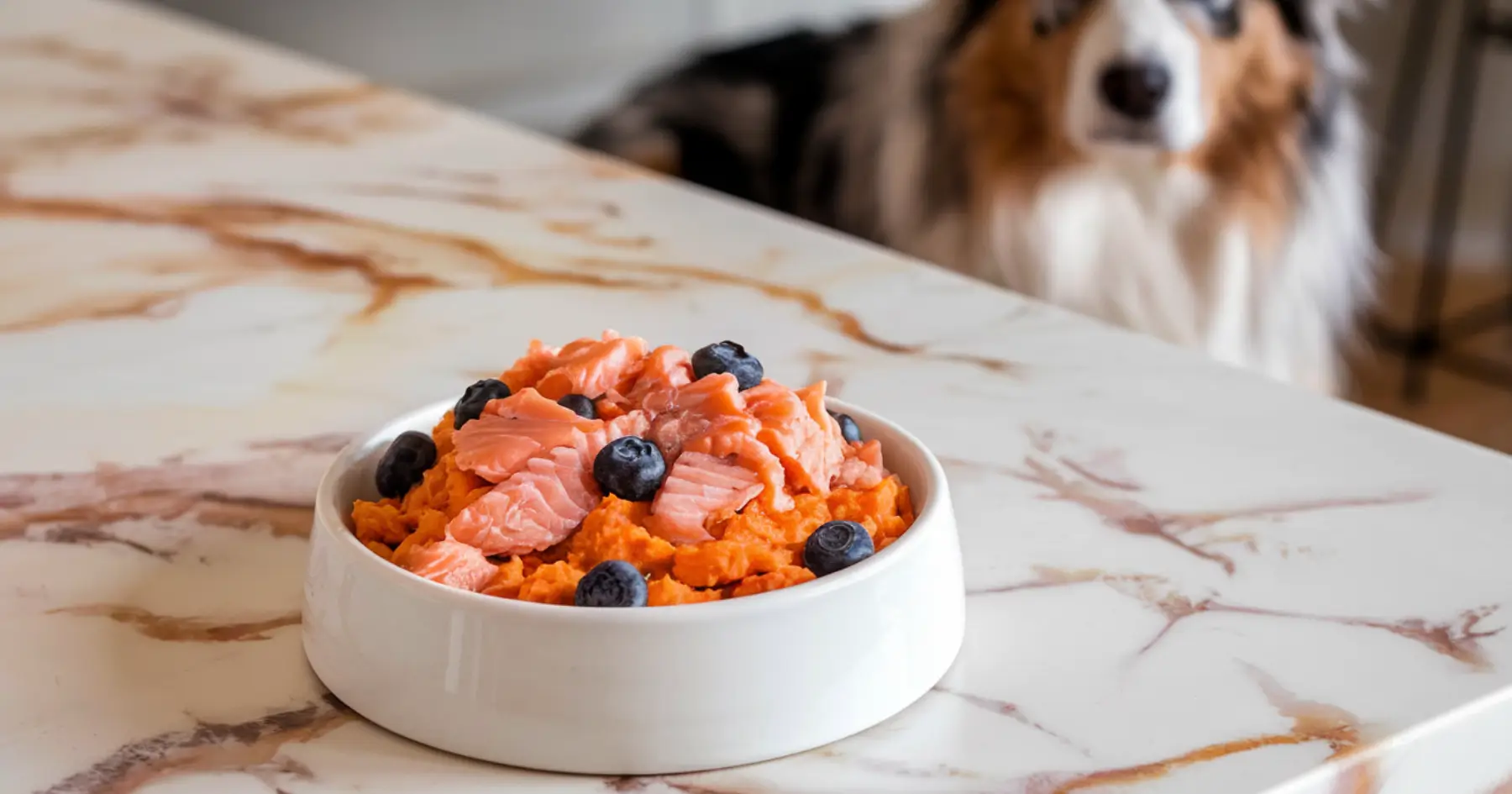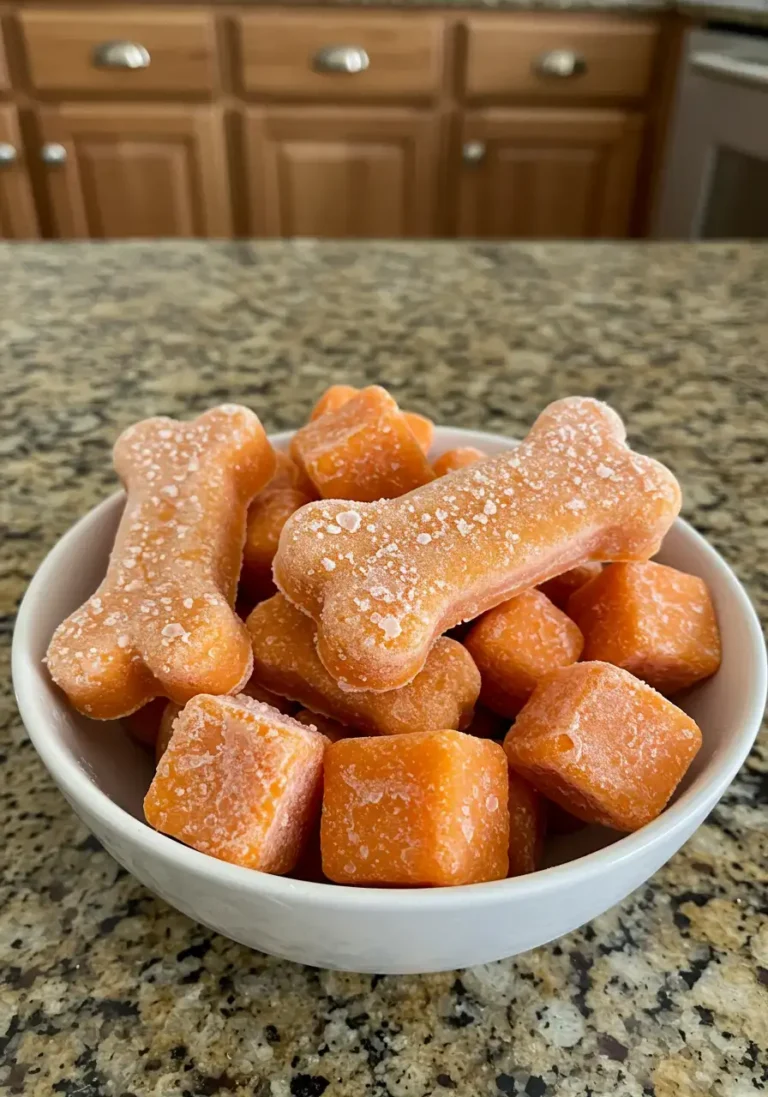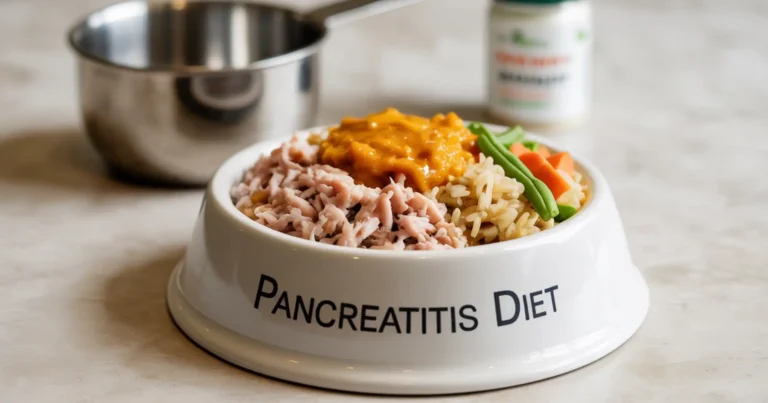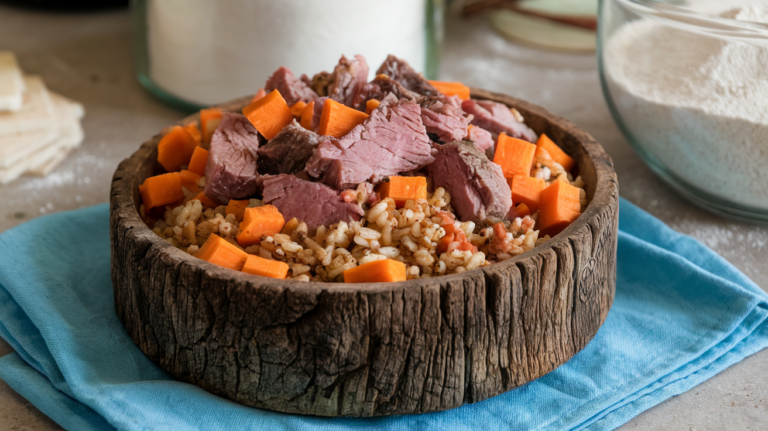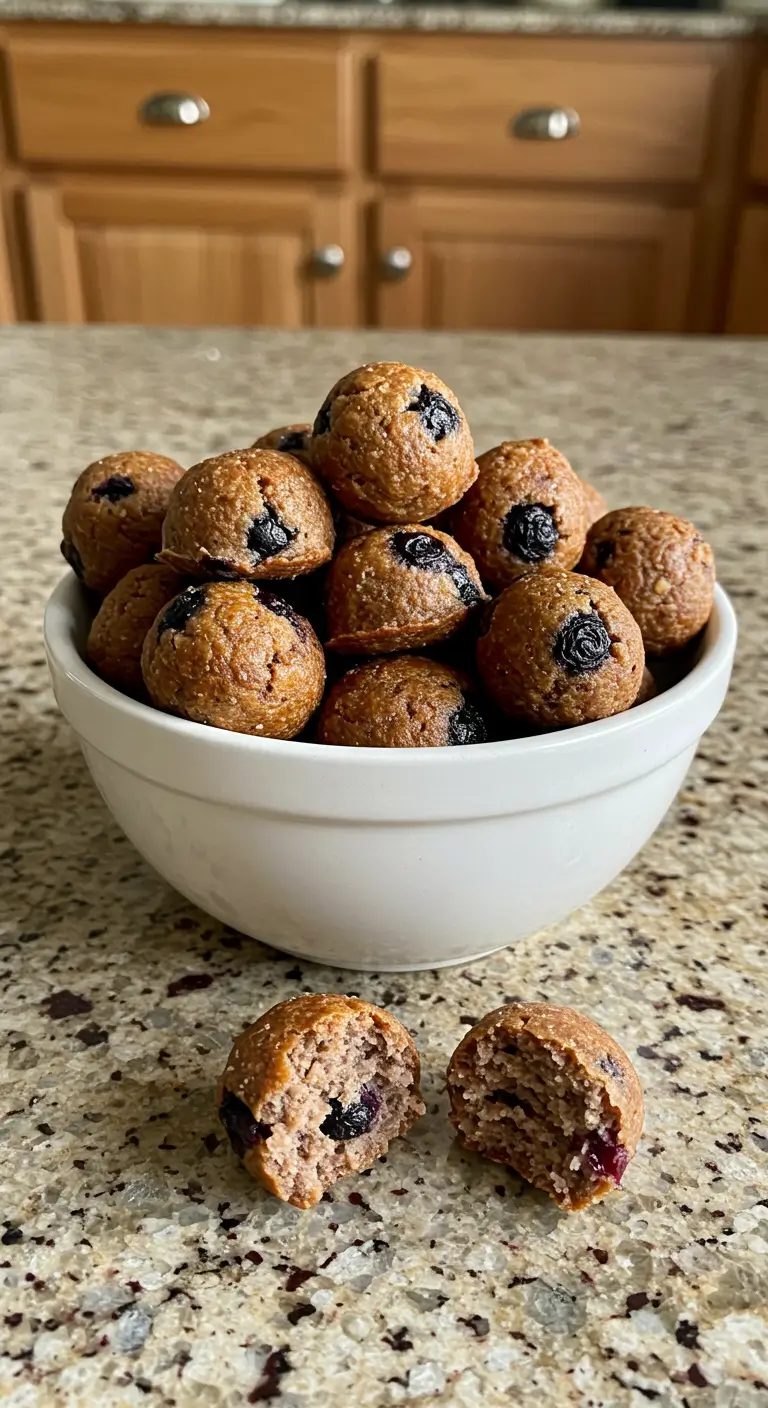Best Salmon and Sweet Potato Dog Food for Allergies
When your dog struggles with food allergies that manifest as itchy skin, recurring ear infections, or digestive issues, finding the right nutrition becomes crucial for their comfort and health. This salmon and sweet potato dog food recipe has become a go-to solution for many pet parents dealing with allergic reactions because it combines powerful anti-inflammatory ingredients with gentle, easily digestible components.
Unlike many commercial foods that contain multiple potential allergens, this salmon and sweet potato recipe focuses on limited ingredients that work together to heal your dog from the inside out. The omega-3-rich salmon helps reduce inflammation while sweet potatoes provide gentle energy and essential nutrients that support skin health.
I’ll guide you through creating this healing meal that countless dogs have benefited from, explaining why these ingredients are so effective for allergies and how to prepare them for maximum therapeutic benefit. Let’s help your furry friend find the relief they deserve!
Table of Contents
Why Salmon and Sweet Potato Excel for Dogs with Allergies
Before diving into our recipe, it’s important to understand why this particular combination of salmon and sweet potato dog food works so effectively for dogs suffering from food allergies and sensitivities.

The Anti-Inflammatory Power of Salmon
Salmon stands out as an exceptional protein choice for dogs with allergies for several important reasons:
Rich in Omega-3 Fatty Acids: Salmon contains high levels of EPA (eicosapentaenoic acid) and DHA (docosahexaenoic acid), which are powerful anti-inflammatory compounds. These omega-3s work at the cellular level to reduce the inflammatory response that causes much of the discomfort associated with allergies.
High-Quality, Easily Digestible Protein: The protein in salmon is complete, containing all essential amino acids dogs need, and it’s structured in a way that’s gentle on sensitive digestive systems. This makes it ideal for dogs whose allergies affect their gastrointestinal tract.
Novel Protein for Many Dogs: While salmon is becoming more common in commercial dog foods, many dogs still haven’t been extensively exposed to it, making it less likely to trigger existing allergic reactions.
Supports Skin Barrier Function: The healthy fats in salmon help strengthen the skin’s natural barrier, potentially reducing the severity of allergic reactions and improving overall coat quality.
Sweet Potatoes as a Healing Carbohydrate
Sweet potatoes complement salmon perfectly in this dog food with salmon and sweet potato combination because they offer:
Gentle, Complex Carbohydrates: Unlike simple carbs that can cause blood sugar spikes, sweet potatoes provide steady energy that won’t stress your dog’s system during the healing process.
Rich in Beta-Carotene: This powerful antioxidant converts to vitamin A in the body, supporting skin health and immune function, both crucial for dogs dealing with allergies.
High Fiber Content: The soluble and insoluble fiber in sweet potatoes supports healthy digestion and can help firm up loose stools that sometimes accompany food allergies.
Natural Anti-Inflammatory Properties: Sweet potatoes contain compounds that have mild anti-inflammatory effects, supporting the healing work of the omega-3s in salmon.
Excellent Source of Vitamins and Minerals: Including vitamin C, vitamin B6, potassium, and manganese, all of which support overall health and immune function.
Understanding Food Allergies and Limited Ingredient Diets
When considering what dog food is good for allergies, it’s essential to understand how food allergies develop and why limited ingredients dog food approaches work so effectively.

How Food Allergies Develop in Dogs
Food allergies happen when a dog’s immune system mounts an immune response against a protein because it believes it poses a threat.This typically happens after repeated exposure to the same proteins over months or years.
Common signs that might indicate your dog has food allergies include:
- Itchy skin, especially around the face, paws, ears, and belly
- Recurring ear infections with a distinctive odor
- Gastrointestinal symptoms like vomiting or diarrhea
- Excessive paw licking or chewing
- Hot spots or areas of inflamed skin
- Poor coat quality or hair loss
The Limited Ingredient Approach
A limited ingredients dog food strategy works by:
- Reducing Potential Triggers: By using fewer ingredients, you minimize the number of potential allergens your dog is exposed to
- Making Problem Identification Easier: If your dog reacts to the food, it’s easier to pinpoint which ingredient might be causing the issue
- Allowing the Immune System to Reset: By avoiding known or suspected allergens, you give your dog’s immune system a chance to calm down
- Supporting Healing: Simple, high-quality ingredients are often easier to digest, allowing the gut to heal
Our salmon and sweet potato recipe embodies these principles perfectly, providing complete nutrition with minimal ingredients.
Complete Salmon and Sweet Potato Recipe for Dogs with Allergies
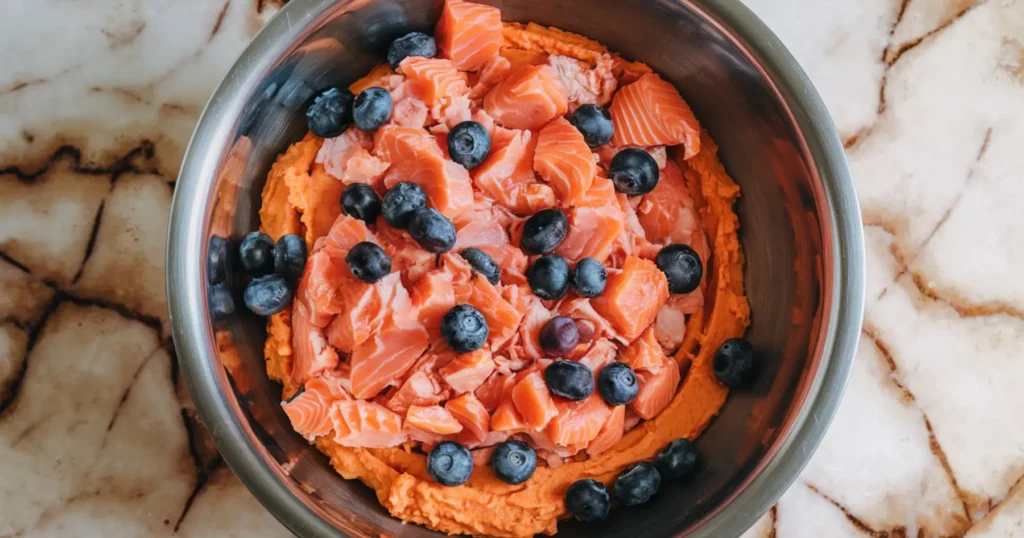
This carefully formulated salmon and sweet potato dog food provides therapeutic nutrition while being simple enough to identify any potential reactions.
Recipe Quick Facts
- Prep Time: 20 minutes
- Cook Time: 35 minutes
- Total Time: 55 minutes
- Yield: Approximately 6-7 cups of prepared food
- Storage: Freeze for up to two months or refrigerate for up to three days.
- Diet Type: Limited ingredient, anti-inflammatory
- Best For: Dogs with skin allergies, inflammatory conditions
Ingredients
- 2 pounds (900g) fresh salmon fillets, skin removed
- 2 pounds (900g) sweet potatoes, peeled and cubed
- 1 cup (240ml) water or low-sodium fish stock
- 2 tablespoons (30ml) salmon oil or fish oil
- ½ cup (75g) blueberries (optional, for added antioxidants)
- 2 tablespoons ground flaxseed (optional, for additional omega-3s)
- 1 teaspoon calcium carbonate supplement
- ½ teaspoon iodized salt
Equipment Needed
- Large pot with steamer insert or steamer basket
- Large baking sheet
- Sharp knife and cutting board
- Food processor or potato masher
- Measuring cups and spoons
- Storage containers with tight-fitting lids
Nutritional Information (Per Cup)
- Calories: 185
- Protein: 16g
- Fat: 8g
- Carbohydrates: 14g
- Fiber: 3g
- Omega-3 fatty acids: 1.2g
Special Instructions for Allergy Management
When preparing this salmon and sweet potato recipe for dogs with severe allergies:
- For elimination diets: Use only salmon and sweet potatoes initially, adding other ingredients later once tolerance is established
- For dogs with fish allergies: This recipe is not appropriate; consider our turkey and quinoa or lamb and rice alternatives
- For dogs with digestive sensitivities: Cook the sweet potatoes until very soft and consider mashing them completely
- For skin conditions: Ensure the salmon oil is fresh and hasn’t become rancid, as this could worsen inflammation
- For multiple allergies: Start with just salmon and sweet potatoes, gradually introducing optional ingredients one at a time
6 Steps to Prepare Healing Salmon and Sweet Potato Dog Food
Follow these detailed steps to create this therapeutic meal that addresses both nutrition and healing.
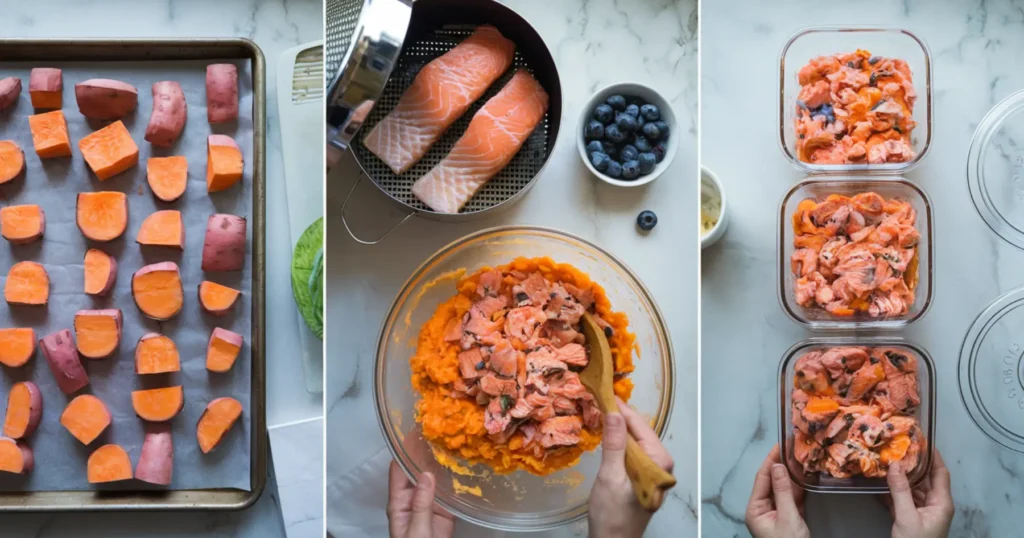
Step 1: Prepare the Sweet Potatoes
- Preheat your oven to 400°F (200°C) or prepare a steamer
- Wash and peel the sweet potatoes, then cut into 1-inch cubes
- If baking: Place cubes on a baking sheet and bake for 25-30 minutes until very soft
- If steaming: Steam for 20-25 minutes until easily pierced with a fork
- Set aside to cool slightly
Cooking tip: Sweet potatoes should be cooked until very soft to maximize digestibility for dogs with sensitive systems. This salmon and sweet potato dog food works best when all ingredients are gentle on the digestive tract.
Step 2: Prepare the Salmon
- Check the salmon fillets carefully for any bones, removing them completely
- Cut the salmon into portions that will fit in your steamer
- Steam the salmon for 8-12 minutes until it flakes easily with a fork
- As an alternative, you can poach the salmon for ten minutes in a small amount of water.
- Allow the salmon to cool, then flake it into bite-sized pieces
- Remove any remaining bones or skin pieces
Safety note: Proper cooking is essential for this dog food with salmon and sweet potato. Undercooked salmon can contain harmful bacteria, while overcooked salmon loses beneficial oils.
Step 3: Prepare Optional Ingredients
- If using blueberries, rinse them thoroughly and lightly mash about half of them
- Measure out the ground flaxseed if including it
- Ensure the fish oil is fresh (it should not smell fishy or rancid)
Ingredient tip: When creating limited ingredients dog food, optional additions should be introduced one at a time to monitor for reactions.
Step 4: Combine the Base Ingredients
- In a large mixing bowl, lightly mash the cooked sweet potatoes, leaving some texture
- Add the flaked salmon and gently fold it in
- Add the water or fish stock gradually until you achieve a moist but not soupy consistency
- The mixture should hold together but not be dry
Texture tip: The consistency of your salmon and sweet potato recipe should be appealing to dogs while being easy to digest. Too dry and dogs may not want to eat it; too wet and it won’t store well.
Step 5: Add Supplements and Final Ingredients
- Evenly distribute the calcium carbonate supplement on top of the mixture.
- Add the salt and mix gently
- Drizzle the fish oil over the food and fold in carefully
- If using blueberries and flaxseed, add them now and mix gently
- Taste-test for texture and adjust moisture if needed
Supplementation note: The calcium supplement is crucial for dogs eating homemade diets long-term, as it helps balance the calcium-to-phosphorus ratio.
Step 6: Portion and Store Properly
- Allow the mixture to cool completely before portioning
- Divide into meal-sized portions based on your dog’s weight
- Store 2-3 days’ worth in the refrigerator in airtight containers
- Freeze remaining portions in individual containers or freezer bags
- Label with the date and contents
Storage tip: This salmon and sweet potato dog food freezes well for up to 2 months. Thaw overnight in the refrigerator before serving.
Serving Guidelines and Transitioning to Your New Recipe
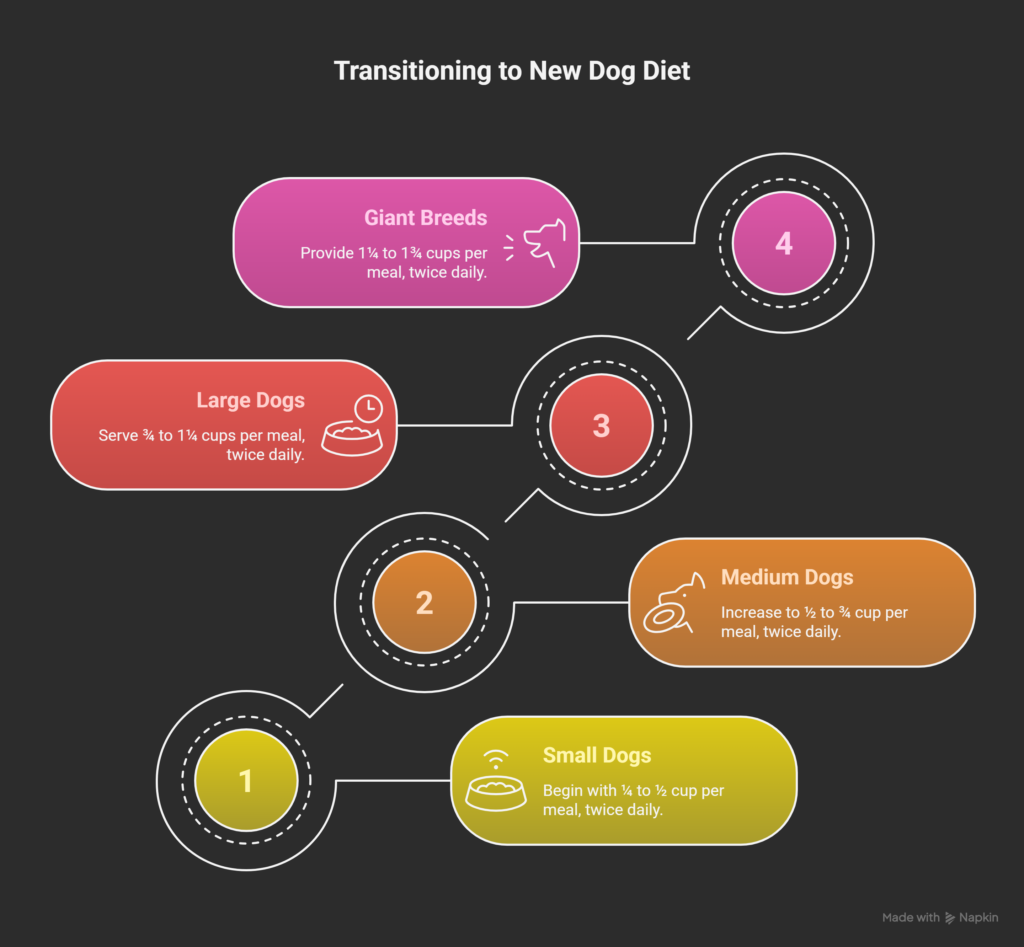
Proper portioning and a careful transition are crucial when implementing any new diet for dogs with allergies.
Daily Serving Amounts by Weight
- Small dogs (under 20 lbs): ¼ to ½ cup per meal, twice daily
- Medium dogs (20-50 lbs): ½ to ¾ cup per meal, twice daily
- Large dogs (50-90 lbs): ¾ to 1¼ cups per meal, twice daily
- Giant breeds (over 90 lbs): 1¼ to 1¾ cups per meal, twice daily
Transitioning Schedule
When switching to this salmon and sweet potato dog food, follow this gradual approach:
- Days 1-3: 75% current food, 25% new salmon recipe
- Days 4-6: 50% current food, 50% new salmon recipe
- Days 7-9: 25% current food, 75% new salmon recipe
- Day 10 onward: 100% salmon and sweet potato recipe
For dogs with severe allergies, your veterinarian might recommend a faster transition or even an immediate switch, depending on their current symptoms and health status.
Monitoring Your Dog’s Response to the New Diet
When using this salmon and sweet potato recipe to address allergies, careful monitoring helps you track progress and identify any issues early.

Signs of Improvement to Watch For
Positive changes indicating the diet is working include:
- Reduced scratching and paw licking within 2-4 weeks
- Improved coat quality – shinier, less flaky skin
- Fewer ear infections or reduced ear odor and discharge
- Better digestive health – more consistent, well-formed stools
- Increased energy and playfulness as discomfort decreases
- Reduction in hot spots or inflamed skin areas
Timeline for Improvement
Most dogs show initial improvements within 3-4 weeks of starting a proper elimination diet, but complete resolution can take 8-12 weeks. Skin issues often take longer to resolve than digestive symptoms because skin cells take time to regenerate.
Warning Signs to Address
Contact your veterinarian if you notice:
- Worsening of allergy symptoms
- New symptoms developing
- Refusal to eat the food for more than 24 hours
- Vomiting or diarrhea that persists beyond the transition period
- Signs of nutritional deficiency (lethargy, poor coat, weakness)
Alternative Limited Ingredient Options for Dogs with Allergies
While this salmon and sweet potato dog food works wonderfully for many dogs with allergies, some pets may need different approaches based on their specific sensitivities.
Other Protein and Carbohydrate Combinations
If your dog cannot tolerate salmon or sweet potatoes, consider these alternatives:
Turkey and Quinoa: Our Limited Ingredient Turkey & Quinoa Dog Meal offers a lean poultry protein with a grain-free ancient grain that provides complete amino acids. This works well for dogs who can tolerate poultry but need to avoid common grains.
Lamb and Rice: For dogs with sensitive digestive systems, our Lamb and Rice Dog Food for Sensitive Stomachs provides a traditional combination that’s been used successfully for decades. The rice is particularly gentle on upset stomachs.
Plant-Based Options: For dogs with multiple protein allergies, our Homemade Vegan Dog Food for Skin Allergies eliminates all animal proteins while still providing complete nutrition. This requires careful planning but can be life-changing for dogs with severe protein allergies.
For comprehensive information about choosing the right approach for your dog’s specific allergies, visit our detailed guide on Homemade Dog Food Recipes for Allergies.
When to Consider Rotating Proteins
Some veterinary nutritionists recommend rotating between different novel proteins every few months to prevent the development of new allergies. If your dog does well on this salmon and sweet potato recipe, you might eventually alternate it with our Duck and Potato recipe to provide variety while maintaining the limited ingredient approach.
Enhancing Your Dog’s Recovery with Supportive Care
While nutrition forms the foundation of allergy management, additional supportive measures can enhance the healing effects of your salmon and sweet potato dog food.
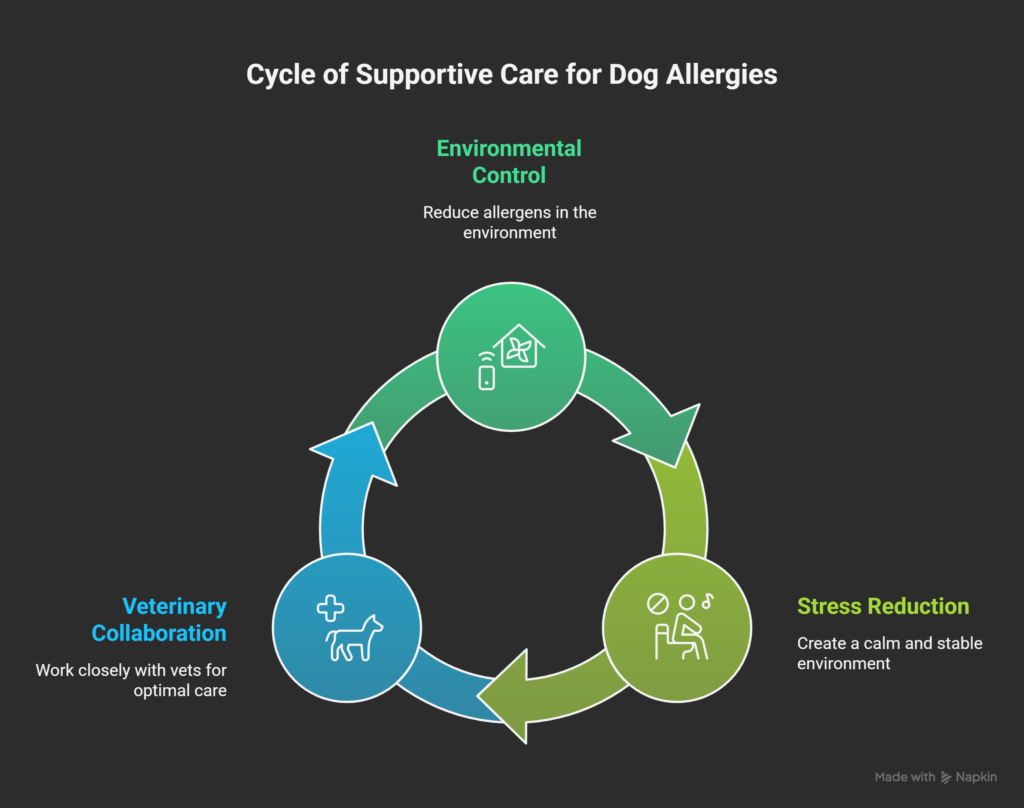
Environmental Allergy Management
Since many dogs with food allergies also have environmental sensitivities:
- Use air purifiers to reduce airborne allergens
- Wash bedding frequently in hypoallergenic detergent
- Consider regular bathing with gentle, moisturizing shampoos
- Minimize exposure to known environmental triggers when possible
Stress Reduction
Stress can worsen allergy symptoms, so creating a calm environment supports healing:
- Maintain consistent daily routines
- Provide quiet spaces for rest
- Use calming techniques during grooming or medication administration
- Ensure adequate exercise to reduce stress hormones
Working with Your Veterinary Team
Regular communication with your veterinarian helps optimize your dog’s care:
- Schedule follow-up appointments to monitor progress
- Discuss any concerning symptoms promptly
- Consider allergy testing if symptoms don’t improve
- Explore additional treatments like antihistamines or immunotherapy if needed
Key Takeaways for Success with Salmon and Sweet Potato Dog Food
To maximize the benefits of this therapeutic diet:
- Maintain strict ingredient control during the elimination phase
- Monitor your dog closely for both improvements and any adverse reactions
- Be patient, as skin healing takes time
- Work with your veterinarian to ensure nutritional completeness
- Keep detailed records of symptoms, improvements, and any reactions
- Avoid giving treats that might contain allergens during the trial period
- Consider this recipe as part of a comprehensive allergy management plan
Conclusion: Healing Your Dog with Anti-Inflammatory Nutrition
This salmon and sweet potato dog food represents more than just a recipe – it’s a therapeutic approach to helping dogs find relief from the discomfort of food allergies. By combining the anti-inflammatory power of omega-3-rich salmon with the gentle, nourishing properties of sweet potatoes, you’re providing your dog with nutrition that actively works to reduce inflammation and support healing.
Remember that every dog is unique, and what provides dramatic relief for one might not work for another. The key is patience, careful observation, and working closely with your veterinary team to create the best possible outcome for your furry friend. With dedication and the right approach, many dogs with allergies can return to comfortable, happy lives.
FAQs About Salmon and Sweet Potato Dog Food for Allergies
How long should I feed this salmon and sweet potato recipe exclusively?
For an elimination diet trial, most veterinarians recommend feeding this limited-ingredient dog food exclusively for 8-12 weeks to properly assess its effectiveness. After this period, if symptoms have improved, you may gradually introduce other ingredients one at a time to identify specific triggers. For dogs who do well on this diet, it can be fed long-term with proper supplementation.
Can I use canned salmon instead of fresh salmon?
Fresh salmon is preferred for this salmon and sweet potato dog food, but canned salmon can be used if it’s packed in water with no added salt or seasonings. Make sure to drain it thoroughly and check carefully for any bones. Avoid salmon packed in oil or with added flavors, as these can trigger sensitivities in allergic dogs.
What should I do if my dog doesn’t like the taste initially?
Some dogs need time to adjust to new flavors, especially if they’ve been eating the same food for years. Try warming the food slightly to enhance the aroma or mixing in a small amount of low-sodium bone broth. If your dog consistently refuses the food for more than 2-3 days, consult your veterinarian about alternative approaches or appetite stimulants.
Is this recipe suitable for puppies with allergies?
Puppies have different nutritional requirements from adult dogs, particularly for growth. While the basic concept of this salmon and sweet potato recipe can work for puppies with allergies, the ratios and supplementation need adjustment for proper development. Work with a veterinary nutritionist to modify this recipe appropriately for growing puppies.
How do I know if the fish oil I’m using is fresh and effective?
Fresh fish oil should have little to no fishy smell and should be clear, not cloudy. Store it in the refrigerator and use it within the expiration date. Rancid fish oil can actually worsen inflammation, so if your oil smells strongly fishy or has been stored improperly, replace it. Many pet parents prefer buying smaller bottles more frequently to ensure freshness.
References and Resources
For additional information about managing food allergies in dogs and nutrition science, consult these trusted veterinary sources:
- Tufts University Cummings School of Veterinary Medicine: Food Allergies in Dogs
- American Kennel Club
- VCA Animal Hospitals: Food Allergies in Dogs
- Cornell University College of Veterinary Medicine
- PetMD: Allergies
Your Dog Tried It? Drop a Review Below!
There are no reviews yet. Be the first one to write one.

